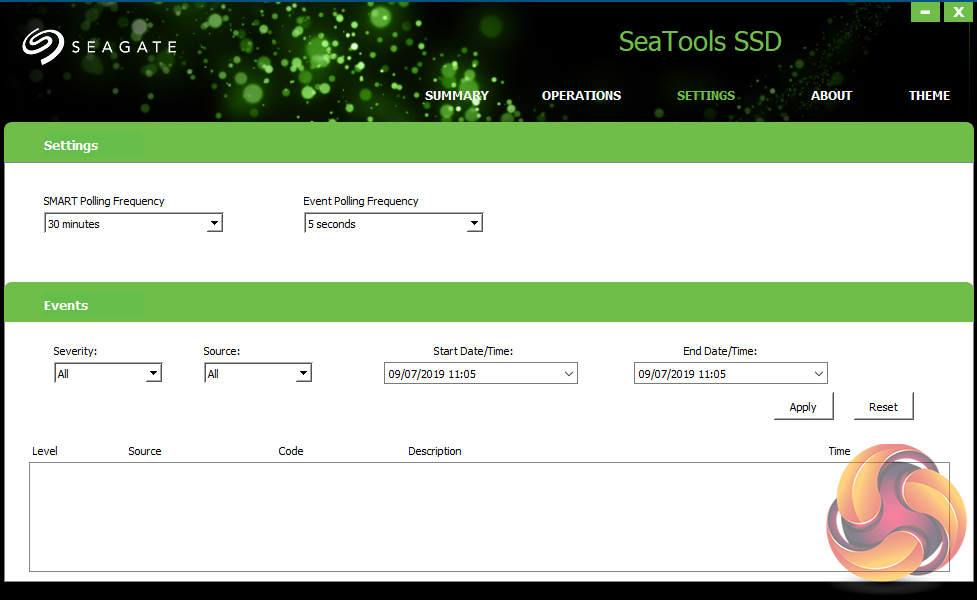

It installs desktop icons without asking, but it uninstalls cleanly. The one place SeaTools displays useful scan data is the Drive Information feature, which offers a detailed report that can be saved to a file. That was enough for us-we left it untouched. The Advanced Tests feature stern warnings that you can lose data or render your drive unusable should you proceed. We later learned from the Help file that the test can take up to four hours and works in 10-percent increments.

We eventually had to abort the test, which caused the program to freeze and shut down. The Long Drive Self Test, however, never progressed past a certain point. The Short Drive Self Test had the same outcome. The program quickly scanned our drive, and it passed the test, but that's all we know SeaTools doesn't display scan results. We went through each test that the program offered, starting with the S.M.A.R.T. It detected our only drive, along with its serial number, model number, firmware revision, and drive and test status. SeaTools' user interface is extremely stark: basic menu items line the top of a plain window, with detected drives are listed below. You'll have to take its word that it's working, though, because it doesn't offer any scan details. There are issues and workaround for drives beyond 2 TB but it is easier not to go beyond such capacities in the first place.Hard disk maker Seagate's SeaTools for Windows scans your disk drives for driver corruption, broken master boot records, viruses and Trojans, spyware, and any hardware conflicts. I recommend using modern SATA drives, XP detects them fine and can handle large capacities. FDISK, the partition utility that ships with DOS and early version of Windows cannot handle more than 64 GB, even if the BIOS supports larger drives.įor Windows XP you do not need to worry about any of this. Strange things happen when you use DOS or early versions of Windows to partition larger hardrives, for example a 320 GB drive. Most BIOS support 32 GB and so do DOS and early versions of Windows. This makes them perfect for retro gaming PCs. I use SeaTools for DOS to put a 32 GB capacity limit on modern drives. I have tested it with various Seagate and Samsung drives, quite recent ones as well with 2TB capacity. The DOS version of SeaTools should support Seagate, Maxtor and Samsung drives. Use an image burning software to burn it onto a blank CD-R.


 0 kommentar(er)
0 kommentar(er)
